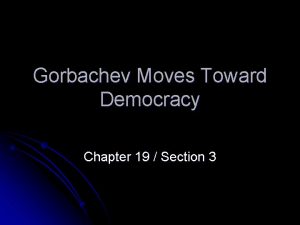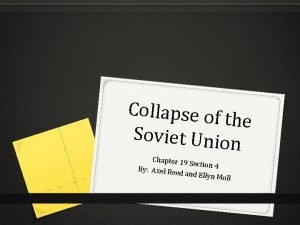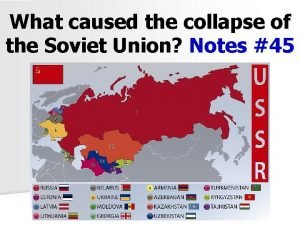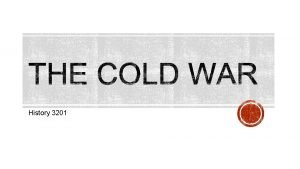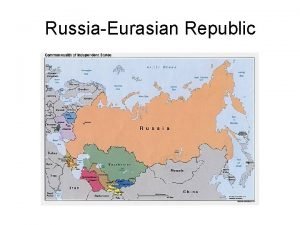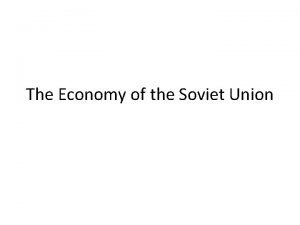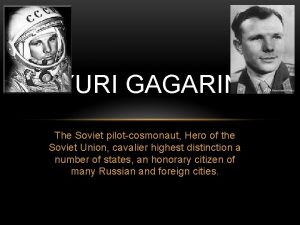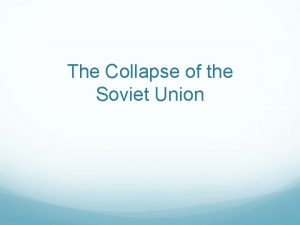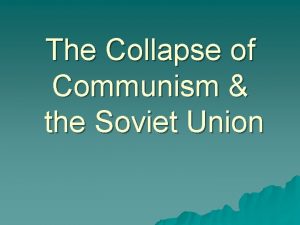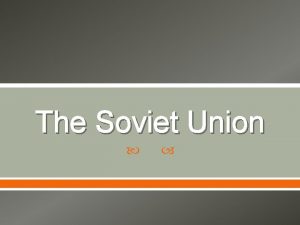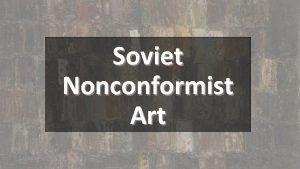Collapse of the Soviet Union WH 23 e







- Slides: 7

Collapse of the Soviet Union WH 23 e

Imelda Marcos

Mikhail Gorbachev Came to power in the Soviet Union in 1988 New kind of Communist leader Formed friendships with leaders in the West and initiated reforms in the Soviet Union

Reforms under Gorbachev Perestroika— “restructuring”: an attempt to increase the country’s productivity, stimulate the growth of technology, decentralize the management of the economy, and allow some free market Glasnost– “openness”: allowed greater freedoms to the Soviet people such as more freedom of speech and freedom of the press; Gorbachev wanted the govt. to be more accountable to the public

Revolution in Eastern Europe The result of the loosened grip of the Soviet Union was mass desertion in Eastern Europe The following countries abandoned their Communist governments around 1989 -1990. Poland Hungary Czechoslovakia Romania East Germany

Disintegration of the Soviet Union The next step was the disintegration of the Soviet Union itself Support for deeper changes emerged throughout the Soviet Union, both from the public and within the government Responding to the pressure, Gorbachev resigned his position on Christmas Day 1991, effectively ending the Soviet Union Boris Yeltsin took over as president of Russia

Boris Yeltsin Huge changes took place in Russia under Yeltsin as the country attempted to move from a Communistic system to a democratic, capitalistic society It’s been a very difficult process for Russia
